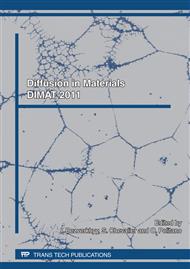p.55
p.61
p.69
p.75
p.81
p.89
p.95
p.101
p.109
Numerical Aspects of Electrodiffusion Problem Based on Nernst-Planck and Poisson Equations
Abstract:
Motivation for this work comes from the application of the inverse method to electrochemical systems. The basic process operating in these systems is electrodiffusion, which can be described by the full form of the Nernst-Planck and Poisson equations. No simplification like electroneutrality assumption is used. Numerical procedure based on the method of lines (MLs) for time dependent electrodiffusion transport is presented with any number of ionic species. The resulting system of ODEs is effectively solved by employing different integrators (Radau IIA, Rosenbrock, SEULEX). Selected electrochemical systems (liquid junction, bi-ionic case, ion selective electrodes (ISE)) are treated. Performance of the integrators is compared.
Info:
Periodical:
Pages:
81-86
Citation:
Online since:
April 2012
Authors:
Price:
Сopyright:
© 2012 Trans Tech Publications Ltd. All Rights Reserved
Share:
Citation:


